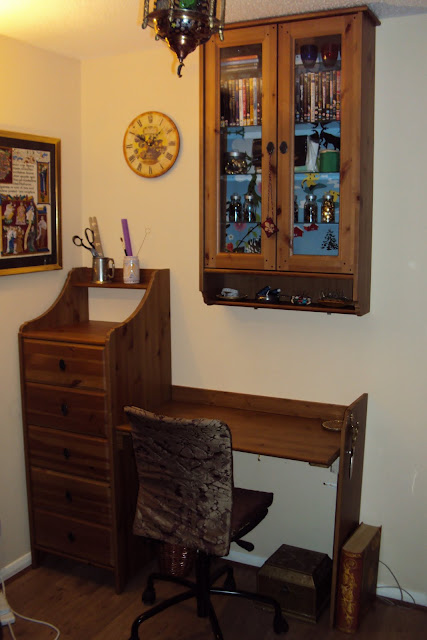Materials: Leksvik book shelf, metal shelf brackets, screws, rawl plugs, wood glue, wood stain, drill
Description: When I decided this year I didn't like my Olde Worldy obbity Leksvik-filled living room anymore, I had to find a good use for the 3 book shelves. The rest of the series (glass topped buffet, hanging glass cabinet and drawers) were going into sewing/guest room, which I was going to customise into being more tailored for for my sewing hobby, while keeping the guest folding bed, IKEA as well, of course. One of the book shelves would fit into the sewing room, too, another went to a friend (the Leksvik shelves are no longer available, she was glad to get an extra one) and the third on would yield enough wood to custom build a sewing table.
I fixed two of the biggest shelf boards together with metal plates and glue, then added three of the narrow back-boards, cut to length, for reinforcement, because a sewing machine is very heavy. I then screwed metal shelf brackets that I had from a former project onto the reinforcements.
I added a piece of back-board onto the drawer unit which would become the left side of the sewing table.
After fixing rawl plugs into the wall (yet another flimsy plasterboard inner wall that drove me batty) I screwed the table top in place at the back while it rests on top of the board on the left side. Now it was time to cut the right side into shape. I used the lower part of the book shelf side, cut it to the desired height, added another back-board for the table top to rest on securely, and fixed it all into place.
After dabbing some wood stain onto the now exposed raw edges that had been smoothed, and the filled holes where the book shelves had once rested on, the customised table was done.
It didn't cost me anything, because I had all the materials already, and I'm mighty proud of it.
See more of the sewing table process posts and many photos.
~ Nicole, Scotland







Post A Comment:
0 comments:
Post a Comment